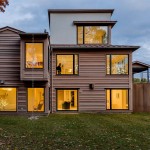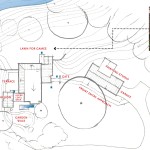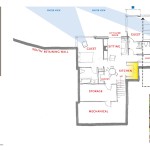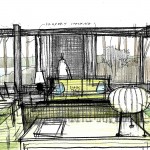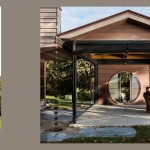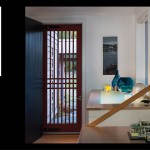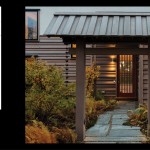Japanese House
Project Name
Japanese House
My clients, a painter and a professor of Japanese culture, wanted a house with traditional and modern Japanese associations: condensed space but with high levels of privacy, flexibility to accommodate grown family and guests, partial screening of natural light, focus on carefully defined views, and materials that would age well. They wanted three distinct buildings: a residence, a screened pavilion for dining and viewing the landscape, and a building for painting, table tennis, and storage of boats and vehicles. The buildings were to define outdoor spaces designed for very specific notions: a nuanced front entry sequence from the north with a traditional gate, a terrace on the water side for entertaining, a walking garden on the east, and a lawn for games on the west. Water features were discussed at length.
The lower level of the residence allows for separate guest living. The main level is a layered open plan for gathering with a library and bath that can be closed with a sliding panel for extra guests. The upper level has a compact primary bedroom and bath on the west with a high degree of privacy, even from her two studies on the east side, one of which has a day bed for guests. White stucco panels, ribbed wood walls (sustainably harvested, no finish), and minimally pitched copper and composite roofs sloping in different directions are common in rural Japanese villages. The sizes and proportions of openings frame intimate views of water features, and carefully composed swaths of the bay, fields and gardens. Large lift-slide glass doors, sliding wood screens and floor to ceiling draperies modulate light and recall shoji. A horizontal glass panel by the front entry allows light from an adjacent window down to the lower level at night; LEDs under the glass provide light below and a glow up for glass objects.
An air-to air multi-zoned heat pump system with heat recovery ventilation, good to minus 15 degrees, provides highly efficient heating and controls humid ocean air. Minimalist gas fireplaces provide radiant warmth and a back-up for heat pumps. A tankless water heater fires an ofuro on the upper level with a view. Ceremonial hand-washing accompanies the traditional passage under the front entry gate. Roofs were shaped to send water with rain chains to basins on the ground, some passing by windows for careful observation.

